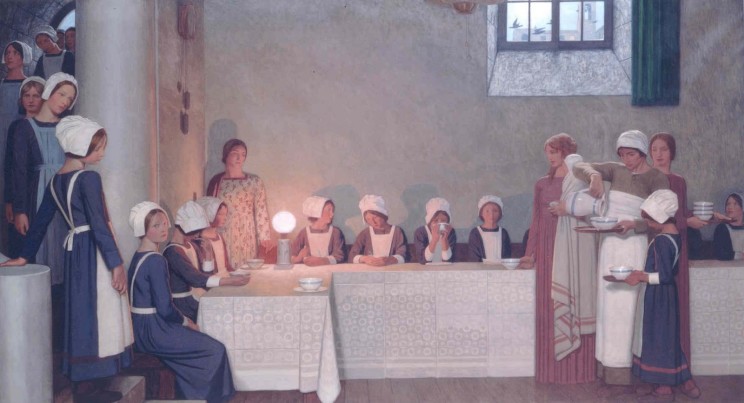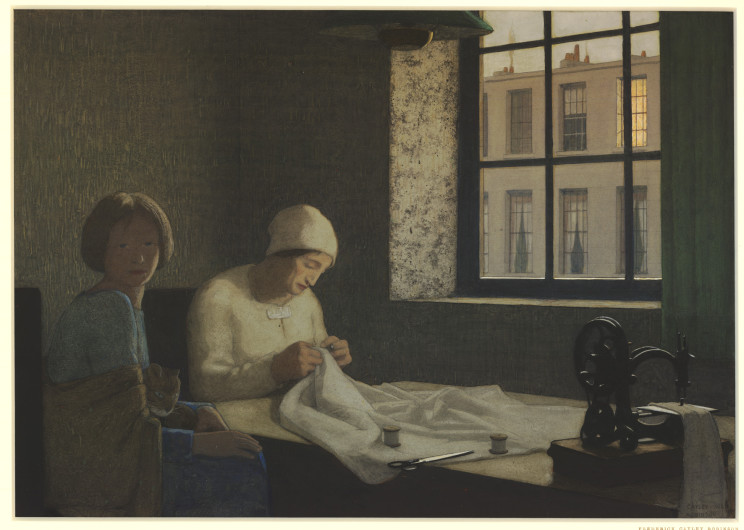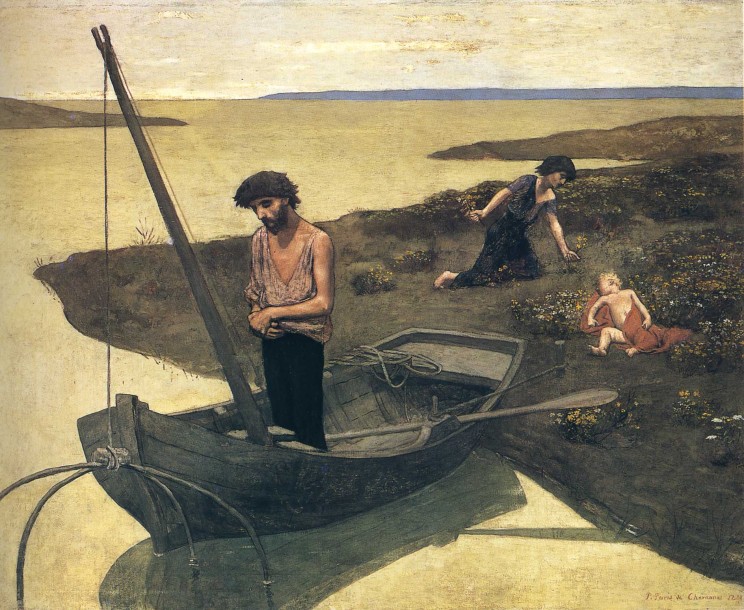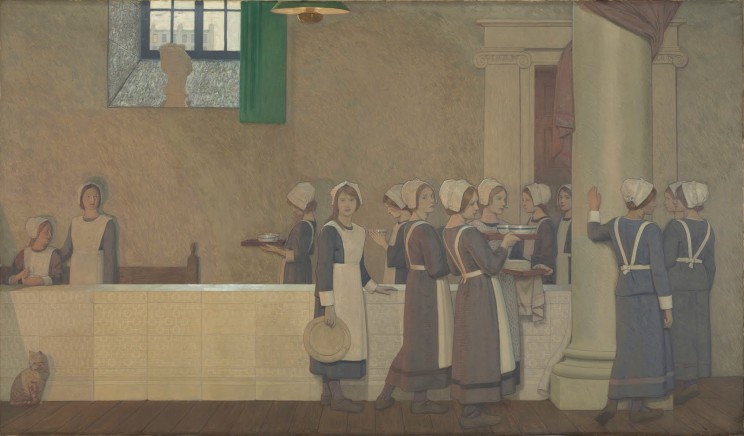The recent exhibition, Acts of Mercy, at the National Gallery has brought well-deserved attention to Federick Cayley Robinson (British, 1862-1927). Despite his remarkable abilities and relationship with still-celebrated artists, the majority of Robinson's works are in museum storage or private collections.

(Like works reproduced on this blog, these paintings are three dimensional objects. In person the vibrancy of Robinson's colors and his painterly skills are undeniable and electric.)
Robinson studied at the Academy of St. Johns Wood before being accepted to London's Royal Academy under Frederic Lord Leighton (British, 1830-1896). He continued to develop his abilities, first at the Academie Julien in France for three years and, then, in Florence.
Robinson moved back the UK to take a teaching position at Glasgow University, where he became a friend and collaborator with members of the Glasgow Boys. But, before taking his post, Robinson travelled to Newlyn, England at the peak of Stanhope Forbes' (British, 1857-1947) career. Like Forbes, Robinson's work was dominated by fisherman, farmers, and shepherds. But, unlike the Newlyn School, which took inspiration from French Naturalism and Jules Bastien Lepage, in particular, Robinson was heavily influence by the Symbolist Pierre Puvis de Chavannes (French, 1824-1898).
In To Pastures New, Robinson creates an homage to the French artist by reversing Chanvannes' composition in The Poor Fisherman.
Robinson's greatest work was a series of paintings commissioned for the Middlesex Hospital. Spanning more than 15-feet each, the four panels of Acts of Mercy are a tour de force of skill, demonstrating Robinson's enormous arsenal of skills and classical vocabulary. He combines the sensibilities of a classicist–deriving poses and motifs from greco-roman sculpture and compositions borrowed Giotto's frescoes–and the subjects from contemporary life. His subjects are orphans and veterans of World War I cared for by the hospital. Aesthetically, it is both contemporary and timeless. A
s commentary on charity, Acts of Mercy is, as my friend and mentor Dr. Tom Gretton commented, a masterclass in receiving charity: how it is given and how it is received. Robinson captures a large spectrum of human relationships in this and in all his works I have been able to see. While Middlesex Hospital has been torn down and the show has now ended at the National Gallery, Acts of Mercy has a new home: the Wellcome Collection.



